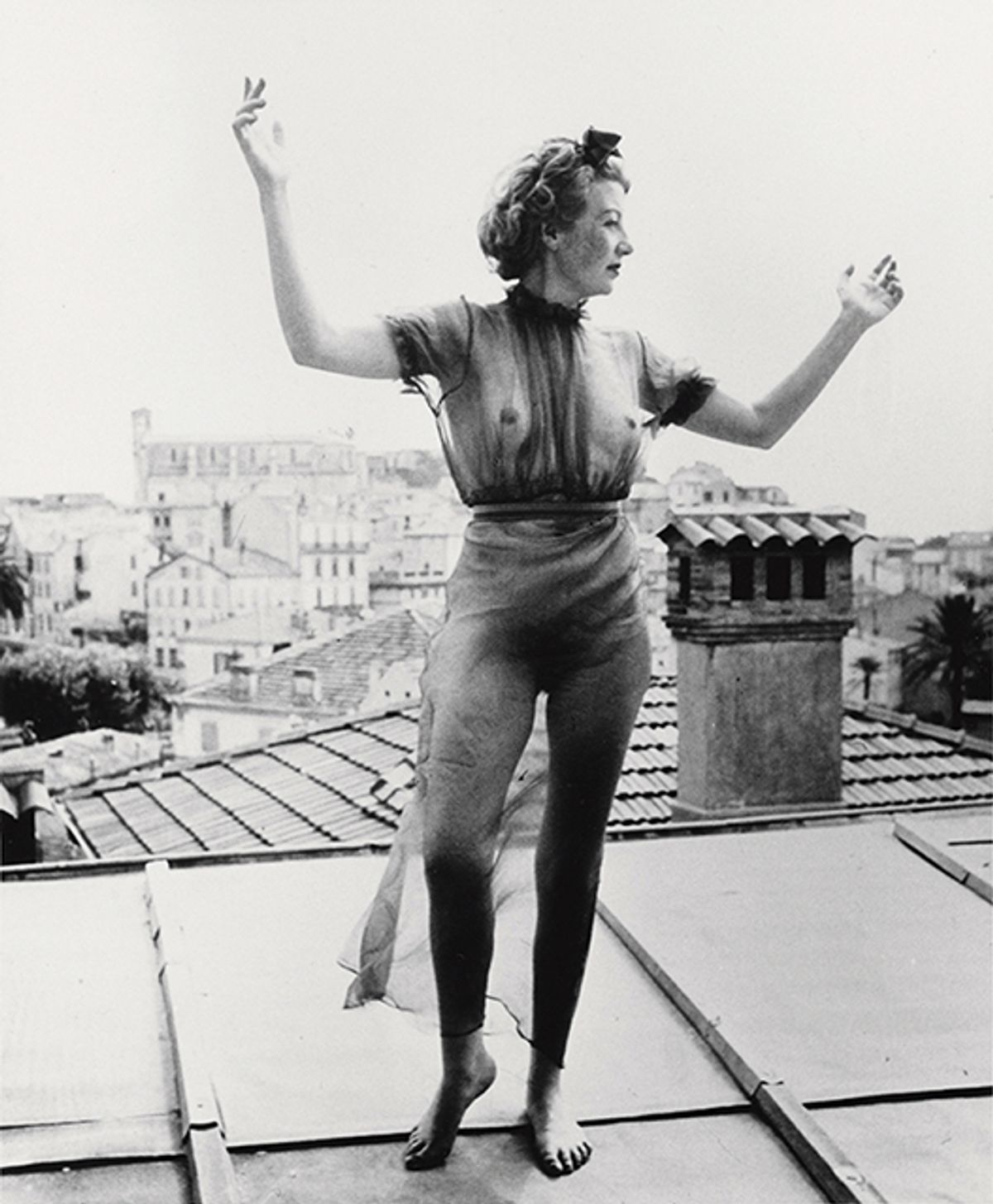“How dull to live in a standardised world,” comments Eileen Agar (1899-1991) in A Look at My Life, an autobiography that certainly avoids such pitfalls. Written in the 1980s and now reissued in a new edition, it recounts the glittering journey from an affluent expatriate childhood in Buenos Aires (where her mother’s “hats were myriad”), to recognition as a leading Surrealist artist in London. The connections are prodigious. There are lords and ladies from the circle of her flamboyant mother and reticent father, and within her own world there are walk-on parts for Mahatma Gandhi, the journalist Dorothy Thompson, the artists Leon Underwood and Oskar Kokoschka, and the writer brothers Alec and Evelyn Waugh, among many others. Artists of Agar’s own generation—Gertrude Hermes, Paul Nash, Roland Penrose—are accomplices in the struggle against social convention, a conflict embodied in the contrast between outer appearance and inner creativity. “From the outside,” she writes of the 1930s studio flat in Bramham Gardens, Kensington, that encapsulated her approach, “the front door looked normal, but from the inside it was a mask-like face: the letter box forming its mouth, a plaster hand the nose, and twisted ironwork as eyes and hair.” In this collaged environment, Agar provocatively gathered “raw material” to be “transmuted into paintings and objects”.
While ample space is given to illustrations of works that show Agar’s development from Slade School realism through to the mature paintings showcased in the 1971 retrospective at the Commonwealth Institute, London, her entertaining account only occasionally fixes on the creative impulse and process. Instead, and at the centre of the social whirl, lies her partnership with the Hungarian writer Joseph Bard, for whom she left her first husband and to whom, after living together for a decade, she proposed as the threat of war closed around them in 1939. They lived parallel lives of mutual inspiration in art and writing, his continental philosophising complementing her creative drive. “He filled my head while I occupied his heart,” she writes.
Tellingly referencing the Surrealists’ favourite passage from the Comte de Lautréamont’s Les Chants de Maldoror of 1869, Agar likens their convergence to the “chance meeting upon a dissecting table of a sewing machine and an umbrella”. Though always based in London, Agar and Bard established new contacts abroad: in Portofino (befriending Ezra Pound and W.B. Yeats), in Paris (where Agar studied with František Foltýn), in Juan-les-Pins (with Lee Miller and Penrose, Dora Maar and Pablo Picasso), or in Tenerife (with the Surrealists Maud and Eduardo Westerdahl).
Visions of the uncanny
Surrealism has remained a touchstone for Agar’s reputation ever since she was invited by Penrose and Herbert Read to contribute to the International Surrealist Exhibition at the New Burlington Galleries, London, in 1936. She regarded the movement with a certain ambivalence, embracing many of its associates as friends but denying that she was ever a “card-carrying Surrealist”. Nevertheless, she has long been associated with the movement through her alertness to the uncanny aspects of the natural world—captured in her photographs of the remarkable rock formations at Ploumanac’h in Brittany—and her creative exploration of unexpected juxtapositions. Her description of her approach to collage as “a displacement of the banal by the fertile intervention of chance or coincidence” confirms this innate sympathy.
Agar outlived Bard and began the memoir, she tells us, as a Journal to Joseph, “the book that Joseph himself should have written”. Passages from Bard’s notebooks remain, although Andrew Lambirth was engaged (as he recounts in the introduction) to turn the spotlight onto Agar herself. Though tempered by this undertow of melancholy, A Look at My Life still captures the enthusiasm and energy of Agar’s embrace of a long and eventful life and its manifestation in her art. By stating that it is “fatal to reduce a thing to a fact alone, for the imagination must have room to stretch”, Agar effectively undercuts any slippages of memory while attaining a high tempo through which she “vividly … comes back to life”, as her great-niece Olivia Fraser states in the preface.
This handsome new edition is part of the reassessment of Agar’s work that (as Lambirth notes) has been enlarged by the research of, among others, Michel Remy, Laura Smith and the 2021 retrospective initiated by London’s Whitechapel Gallery. It is for Agar’s indefatigable search for what she eventually calls the “sparkling moment” that this autobiography remains so compelling.
• A Look at My Life, by Eileen Agar, with a foreword by Olivia Fraser, and introduction to the new edition by Andrew Lambirth. Thames & Hudson, 320pp, 93 illustrations (52 colour), £35/$45 (hb), 2 and 7 May



